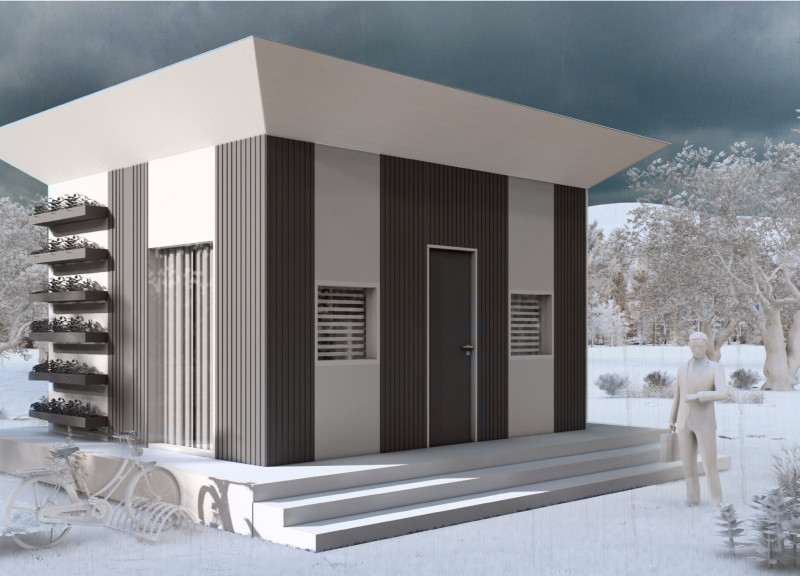5 key facts about this project
From its conception, the architecture seeks to foster connectivity and inclusivity, creating spaces that not only serve the needs of residents but also invite interaction among various community members. The design incorporates open layouts and flexible spaces that adapt to diverse activities, allowing for social gatherings, individual reflection, and collaborative endeavors. Such functionality is essential in today's architectural landscape, where multi-use areas are increasingly favored for their versatility.
One of the most notable aspects of this project is its emphasis on materiality. The architectural design employs a range of materials that not only serve aesthetic purposes but also contribute to the building's performance and sustainability. For instance, the use of natural stone cladding establishes a sense of permanence and grounding, while sustainable sourced timber accents add warmth and texture. Additionally, large glass panels are strategically placed throughout the structure, facilitating abundant natural light and a visual connection to the surrounding landscape.
Furthermore, the project incorporates innovative architectural techniques that enhance its overall effectiveness. The careful articulation of the façade through varying depths and projections creates visual interest while serving practical purposes, such as optimizing solar gain and reducing heat loss. The roof design is equally compelling, featuring overhangs and terraces that extend usable space outdoors while providing shade and comfort to the occupants below.
Environmental considerations are central to the architectural design approach employed in this project. The integration of energy-efficient systems, such as rainwater harvesting and solar energy panels, underscores a commitment to sustainability. By employing these technologies, the architecture not only supports ecological responsibility but also reduces the long-term operational costs for residents.
Landscaping plays a critical role in the overall design, seamlessly blending the built environment with the natural surroundings. Carefully chosen plantings provide visual appeal while contributing to biodiversity in the urban landscape. The outdoor spaces encourage recreational activities and community engagement, reinforcing the project's intent to serve as a social hub.
In terms of unique design approaches, this architecture stands out for its attention to user experience. The careful consideration of how occupants will interact with different spaces reveals a design philosophy that prioritizes comfort and accessibility. Pathways, entrances, and gathering areas have been designed to enhance flow and functionality, while artful details add character without overwhelming the overall design language.
The project ultimately represents a thoughtful exploration of how architectural design can shape the experience of space. By emphasizing community, sustainability, and adaptability, it sets a standard for residential and communal architecture in an increasingly interconnected world. For those interested in further exploring the intricacies of this project, it is beneficial to delve into the architectural plans, sections, and designs to appreciate the depth of thought and creativity behind each element. Engaging with these details can provide a richer understanding of the architectural ideas that manifest throughout the building and its surrounding environment.


 SevgÜl ÇİÇek ŞİmŞek,
SevgÜl ÇİÇek ŞİmŞek,  Eylem BodakÇİ
Eylem BodakÇİ 























